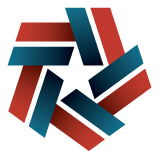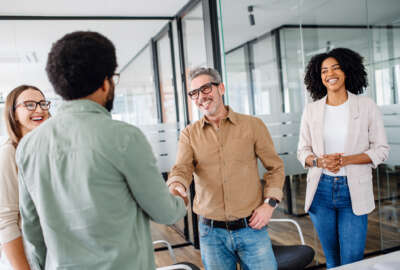Making the federal hiring process more equitable
We finally have a moment in time at which we might make real, substantive progress with respect to making the federal hiring process more equitable.
Every President since Bill Clinton has tried to transform the federal workforce and undo the systemic sexism and racism embedded in federal hiring processes. After twenty years of little to no progress, the Biden Administration’s focus on racial and gender equity, and implementation of EO-13932 provides an opportunity to finally drive real change.
Replacing biased and non-predictive hiring practices (such as the use of minimum education requirements and candidate self-assessments) with scientifically validated assessments of each applicant’s abilities has the potential to increase diversity and reach the broader goal of improving the overall quality of candidates entering federal service.
According to the Talent Board’s 2016 Candidate Experience Research Report, 82% of companies use some form of pre-employment assessment to improve the quality and diversity of their hiring decisions. However, according to GSA’s recent Hiring Assessment and Selection Outcome Dashboard, the selection process for less than 2% of all jobs posted on USA Jobs last year used objective assessments as part of the selection process.
The latest Federal Equal Opportunity Recruitment Program Report to Congress (published in 2016) demonstrates just how biased and broken the federal hiring system is as a result:
- Minorities are underrepresented by more than 40% within the Senior Executive Service corps, and women of all backgrounds are underrepresented by almost 20% at that level.
- Every Federal Employee Viewpoint Survey since 2001 has shown that roughly 50% of all federal employees are dissatisfied with the current federal hiring process and do not believe their agency is able to attract, hire or retain the best-qualified people.
While implementing scientifically validated assessments is a good first step toward improving diversity in hiring, efforts can’t stop there. The government needs to take a holistic approach and reengineer the entire selection process to rid hiring and talent acquisition of systemic bias. Fortune 500 companies that have successfully increased the quality and diversity of hires using assessments have transformed their entire talent acquisition process, from advertising and initial engagement of potential applicants all the way to final selection.
To transform its hiring and talent acquisition processes, the federal government would do well to emulate the below best practices and tactics that the private sector has implemented to improve diversity, equity and inclusion.
- Expand the funnel; Advertise in non-traditional media. The goal is to find and attract the best applicants, not just to find and attract non-traditional applicants. Don’t expect to improve the diversity of candidates “if you always fish in the same pond.” Being a world-class employer requires using multi-channel marketing of your agency as a “destination employer” (versus only posting positions on USA Jobs as they open).
- Provide everyone an equal opportunity to apply. Reducing barriers increases access. By interviewing more candidates, employers can increase the representation of applicants in historically underrepresented groups. Adverse impact is more likely to occur in small samples. If your organization arbitrarily stops taking applications within a week of advertising because it is “receiving too many applications” or “doesn’t have enough people to review that many applications,” you have a de facto discriminatory hiring process. You can’t be an equal opportunity employer if your agency is not even giving everyone an equal chance to apply for jobs in the first place. Invest in business process reengineering and automation to ensure that every applicant who wants to apply for a position has an equal opportunity to do so.
- Make the hiring process as frictionless as possible. Fortune 500 companies apply the concept of “frictionless commerce” to their hiring processes. The best employers treat job seekers no different than customers and make applying for a job as easy as purchasing a widget on Amazon. Instead of requiring detailed resumes or long questionnaires, they apply the “3 click rule” to hiring, and leverage modern technologies to limit the amount of paperwork each applicant must provide (enabling them to evaluate greater numbers of applicants more quickly).
- Eliminate racist and sexist resume reviews. Multiple studies have shown that resume reviews are generally worthless in predicting how well an individual may or may not perform in any given job. Candidates’ names and home addresses are major sources of non-predictive bias in resumes. However, many hiring managers are much less aware of just how bad the impact is of having the previous employers, salary histories, hours worked, colleges and GPAs, hobbies, extracurricular activities, internships, and summer jobs listed on a resume. All of these standard resume components create significant levels of non-predictive bias in the hiring process, disenfranchising large groups of otherwise qualified candidates. In theory, redacting all of this information might mitigate some of the bias inherent in resume reviews. However, in practice, a fully redacted resume is relatively useless in predicting an applicant’s potential for any particular job.
- Structure Interview Content and Evaluations. Consistency reduces bias. Structured interviewing with consistent question templates helps reduce unconscious bias. As unconscious bias reduces, potential for more diverse & inclusive hiring increases. Additionally, structured evaluations provide consistent and objective guidelines for reviewing and rating candidate responses and support data-driven decisions in the hiring process. Evaluator Rating Guides promote an objective and consistent evaluation while reducing opportunities for unconscious bias.
- Use scientifically validated assessments (with adequate cybersecurity and privacy). A handful of companies provide assessment software that has been scientifically validated and audited for both their predictive validity and lack of adverse impact. In addition to investing hundreds of millions of dollars into organizational psychology, data science, testing and validation processes that go into these assessments, these companies have also implemented the cybersecurity and privacy controls required to safeguard candidates. When a well-known Silicon Valley company tried to build their own assessments, they failed spectacularly. They were ultimately successful at transforming their hiring process, but only after implementing scientifically validated, commercial off-the-shelf assessments from one of the aforementioned handful of SaaS assessment providers. It is not reasonable to expect that any government agency or its system integrator could succeed where one of the five largest technology companies in the world failed.
- Build diversity, equity, & inclusion considerations into HR software & services contracts. Fair and effective hiring hinges on the use of modern commercial software and services. When commercial employers purchase assessments or other HR software and services, they do so based on either the number of hires (for TA services) or number of employees (for talent management). Commercial employers do not write contracts for the number of applicants or the number of assessments, because they don’t want anything in their hiring system to drive a reduction in the size of their candidate pool or induce any other type of discriminatory, non-predictive behavior. The government must contract properly for these types of services taking diversity, equity, inclusion and the entire end-to-end process into account when they do.
After centuries of systemic oppression and decades of failed attempts to correct it, we finally have a moment in time at which we might make real, substantive progress with respect to making the federal hiring process more equitable. It is the responsibility of every career executive in the federal government to take advantage of this unique moment in time and drive real change.
Joe Paiva is a retired Federal CIO and Army Officer. Allie Wehling is an IO Psychologist and SHRM-SCP.
Copyright © 2025 Federal News Network. All rights reserved. This website is not intended for users located within the European Economic Area.
Joe Paiva is a retired software industry executive best known for helping to start, grow, buy and sell tech companies. He also served as both an Army Reservist and a senior federal civilian leader in the departments of Defense, Veterans Affairs and Commerce.






